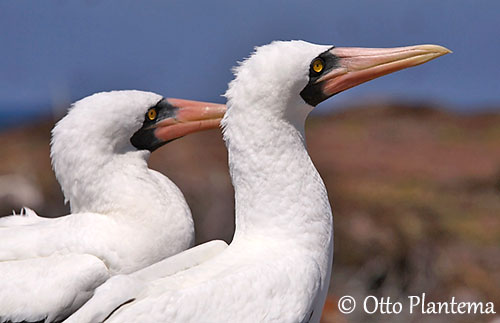
Species list :
Sources: Avibase (Lepage Denis)
Barau’s Petrel - Pterodroma baraui - Pétrel de Barau
Brown Booby – Sula leucogaster – Fou brun
Brown Noddy - Anous stolidus - Noddi brun
Great Frigatebird - Fregata minor - Frégate du Pacifique
Lesser Frigatebird - Fregata ariel - Frégate ariel
Masked Booby - Sula dactylatra - Fou masqué
Red-footed Booby – Sula sula – Fou à pieds rouges
Red-tailed Tropicbird - Phaethon rubricauda - Phaéton à brins rouges
Ruddy Turnstone - Arenaria interpres - Tournepierre à collier
Sanderling – Calidris alba - Bécasseau sanderling
Sooty Tern - Onychoprion fuscatus - Sterne fuligineuse
Tropical Shearwater - Puffinus bailloni - Puffin de Baillon
Wedge-tailed Shearwater - Puffinus pacificus - Puffin fouquet
Whimbrel – Numenius phaeopus – Courlis corlieu
White-tailed Tropicbird – Phaethon lepturus – Phaéton à bec jaune
White Tern – Gygis alba – Gygis blanche


Otto Plantema
Trips around the world
TROMELIN ISLAND BIRD SPECIES
Tromelin Island is a small island, a low, flat area (it is only 7 metres high) in the Indian Ocean, 500 km N of La Reunion and 450 km E of Madagascar. It is part of the Iles Eparses.
It is about 1,700 metres long and 700 metres wide, with some 80 ha covered in grass and low scrubs such as veloutaries and purslanes which are present everywhere on the island.
Due to lack of fresh water, the vegetation is poorly developed. Weather conditions are hard, with heavy winds day and night, except in summer. However, during this period of three months, cyclones and storms often assail the island surrounded by coral reefs.
This island is uninhabited, but Hermit Crabs, Green Sea Turtles and several seabird species nest on the island, but there are no resident terrestrial birds.
Tromelin Island was discovered in 1720s by the French navigator Jean Marie Briand de la Feuillée, and was named Isle of Sand. It was only a tiny sandbar surrounded by coral reefs.
On July 1761, a ship ran into the surrounding coral reefs. Numerous slaves were on the boat bound for plantations. Several slaves died drowned, but about 60 of them were able to swim and reach the coast. The crew men of the ship built a smaller new boat out of debris of the old one, and returned to Madagascar. The Malagasy slaves were left on the island where only seven women and a child were still alive 15 years later, in 1776. They were rescued by the Chevalier de Tromelin (giving the island its name), captain of the French warship La Dauphine.
Tromelin Island is an Important Bird Area and a seabird breeding site. Among them, the Masked Booby and the Red-footed Booby nest on the island. These populations are the healthiest in the W Indian Ocean.
Both Great Frigatebird and Lesser Frigatebird were also known to breed on this island. However, they have been extirpated, but they still use Tromelin Island as roosting site.
But Sooty Tern, White Tern, Brown Noddy and Lesser Noddy are also part of the avifauna of the island.
Accidentally introduced rats involved the decline of six of the eight native bird species and native plants. But in 2005, rats were eradicated by scientists in December 2005/January 2006, offering Tromelin Island a chance to recover. It is today an important ecosystem used for environmental research.
Text by Nicole Bouglouan
Sources of the text:
Wikipedia, the free encyclopaedia
The Recovery of Tromelin Island
Seabird recovery and vegetation dynamics after Norway rat eradication at Tromelin Island, western Indian Ocean By Matthieu Le Corre, D. K. Danckwerts, David Ringler, Matthieu Bastien, S. Orlowski, C. Morey Rubio, David Pinaud, Thierry Micol
Jean Michel Fenerole
Photos d’Oiseaux du monde